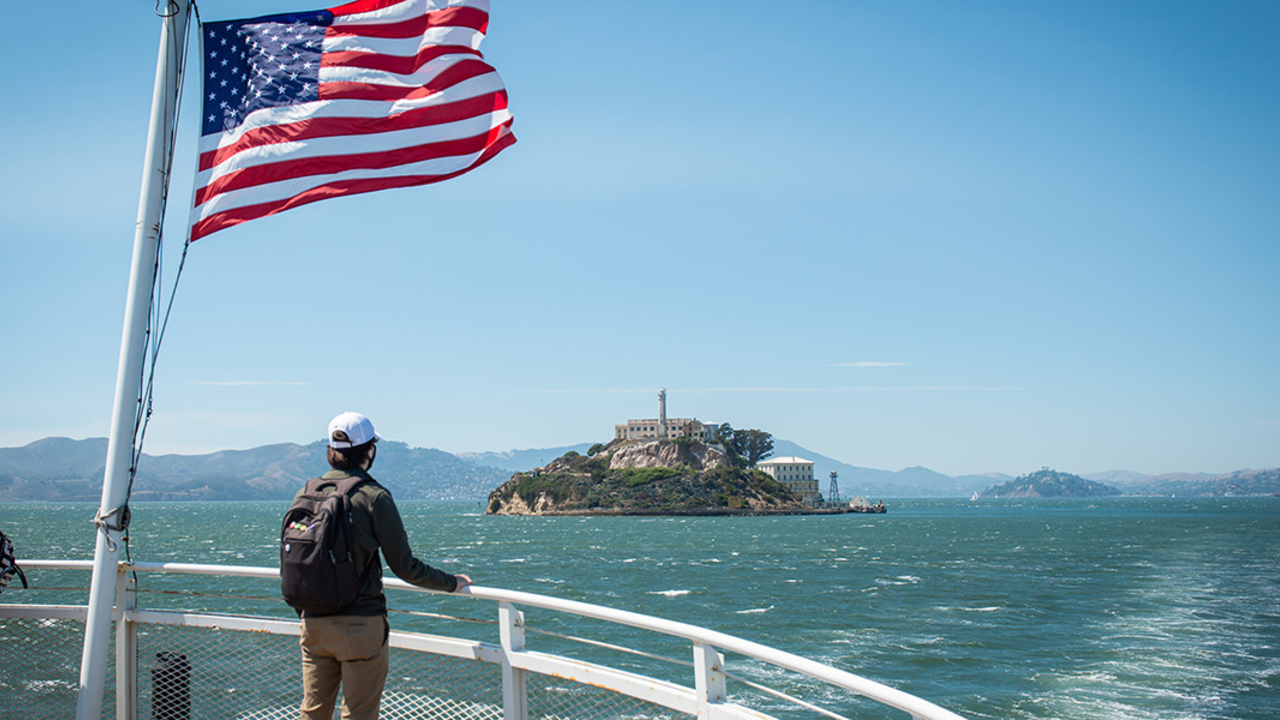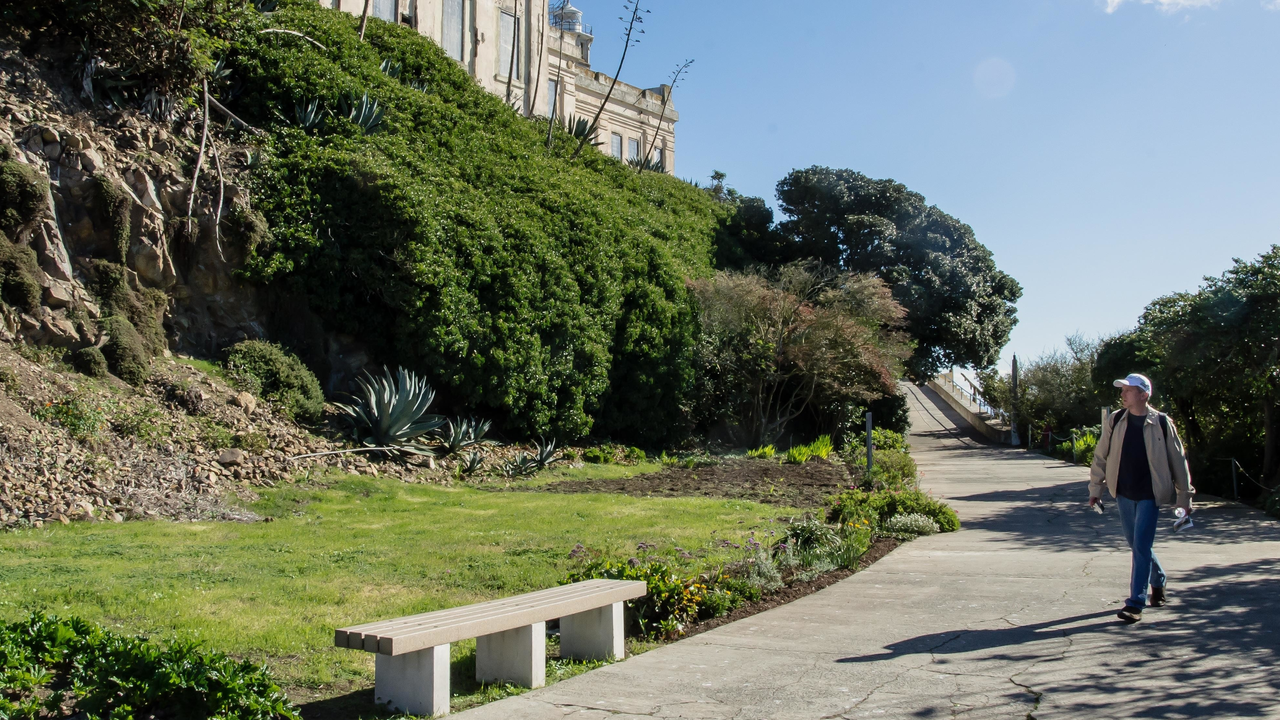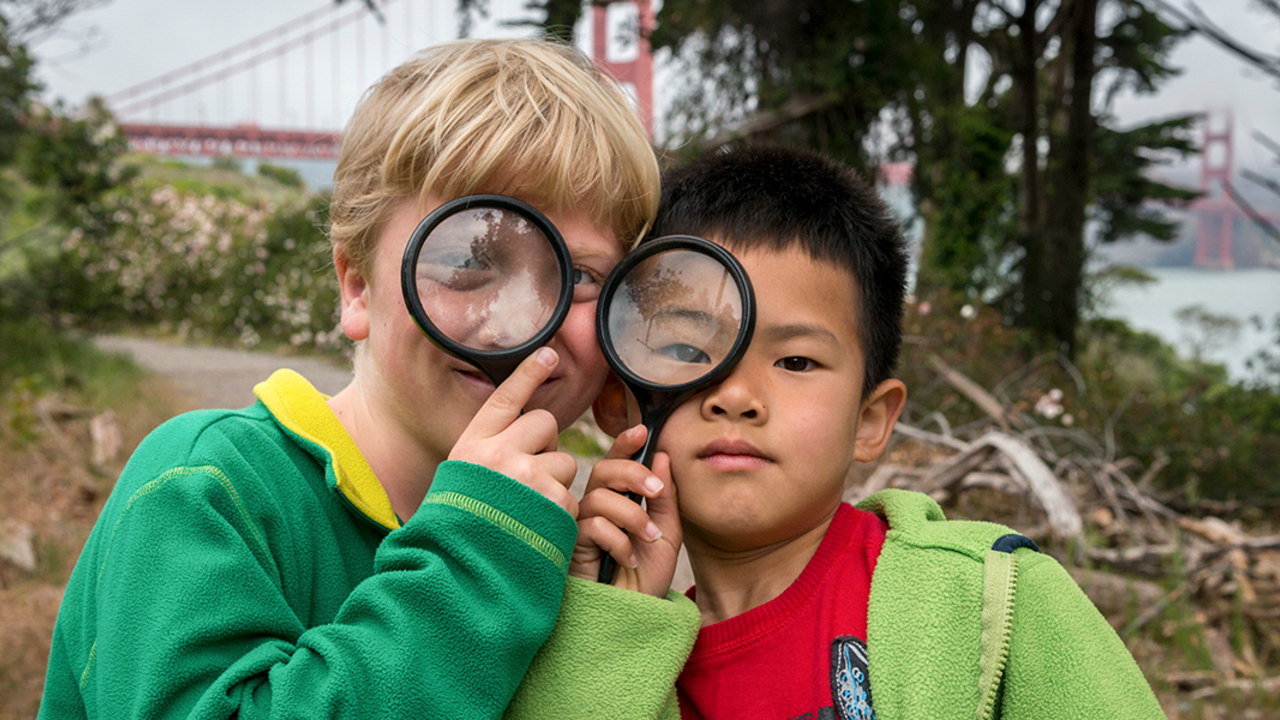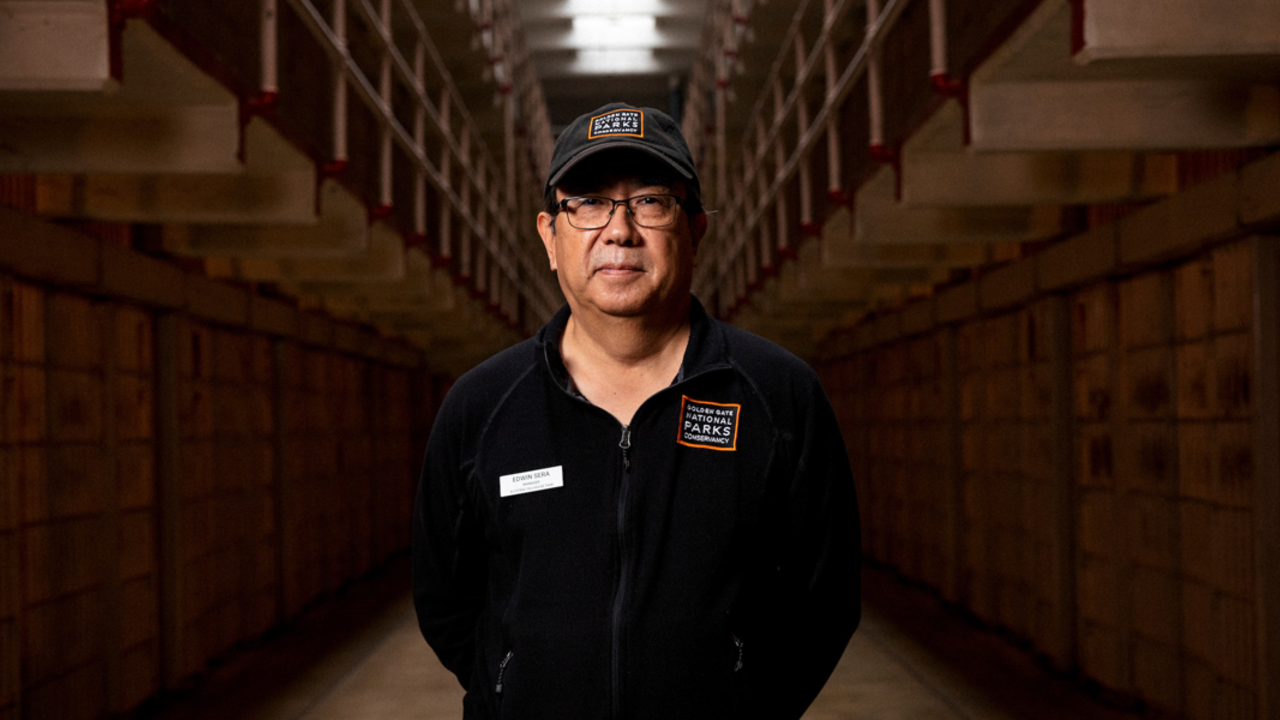Unlocking truth: How Alcatraz is changing the conversation on incarceration
A look at the Formerly Incarcerated Speaker Series

Anna Christie / NPS
Stanford Chatfield, a Historical Interpreter with the Golden Gate National Parks Conservancy, gets to take visitors all over Alcatraz Island—through the secret tunnel that was reopened for filming of "The Rock" to high above Broadway in the main Cellhouse. But the one Alcatraz hidden gem he recommends most?
He asks people to stop and appreciate the sunsets.
"For the longest time I didn't get to even see a beautiful sunset, we were locked up by the time the sun goes down in most cases," says Stanford, who was formerly incarcerated at different prisons in Hawaii and California. "The perspective from Alcatraz is so unique, it's really beautiful."
Stanford draws on his experiences to tell the Alcatraz story in new ways. Through storytelling and inspirational programs like the Formerly Incarcerated Speaker Series, the Parks Conservancy and National Park Service are helping 1.4 million annual Alcatraz visitors reflect on justice, mass incarceration, and the human experience at this vital national park site.
Stanford helps coordinate the Speaker Series, which elevates the voices of people who have spent time in prisons and jails. Through firsthand voices and unscripted conversation, the Alcatraz event series invites visitors to rethink what they know about incarceration. It's open to all visitors and continuing through this fall, organized in conjunction with Troy Williams of Restorative Media.
"Over a million people visit Alcatraz every year, we know they come because of that infamous history—Al Capone, Machine Gun Kelly, Bumpy Johnson. They come for that, but they leave having heard the human side of people who have experienced incarceration," said Troy, who was formerly incarcerated at San Quentin. "It helps change peoples' perspectives."
A powerful platform for restorative justice and reentry stories
On a recent Saturday, Troy sat down with John Cunningham of the nonprofit Rubicon Programs Inc., as dozens of visitors stopped their tours around the New Industries Building to listen in. Troy and John talked about the pain of being incarcerated, what it was like to be separated from their families, but that it was just one chapter in their lives. John talked about lifting up justice-impacted single parents through his nonprofit.
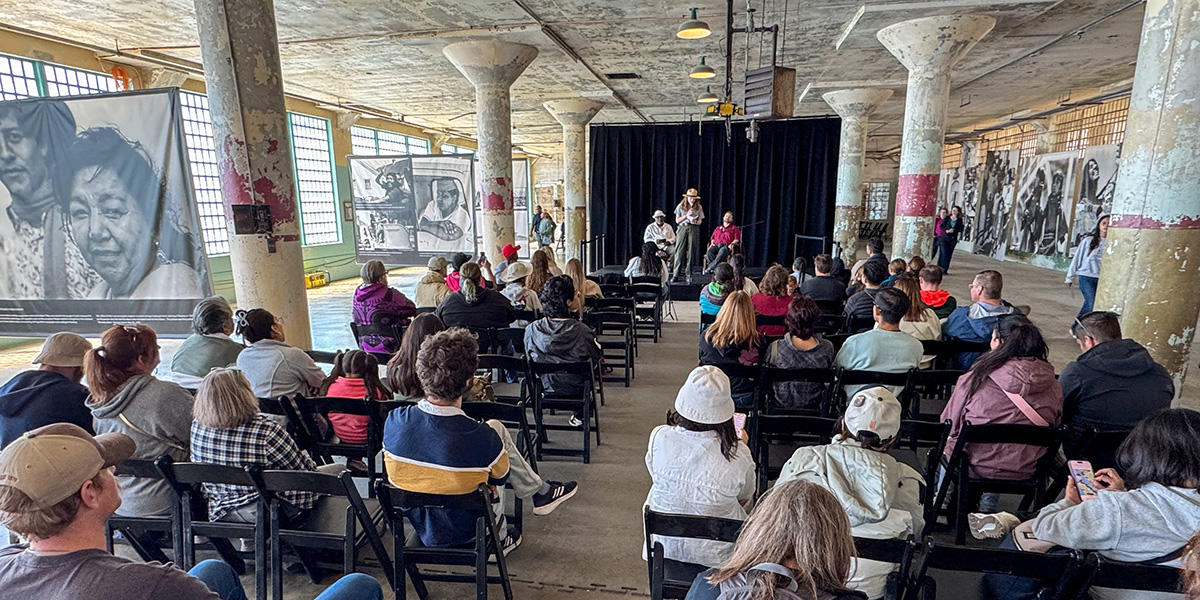
Sean Kelly / Parks Conservancy
During Q&A, visitors can have a direct conversation about incarceration and reentry. On this day, people asked why it's hard to get a job after prison, and about sentence enhancements that lead to longer prison terms. The speakers urged the audience to pay attention to the fine print on ballot measures, and said "not voting is a vote too."
"Alcatraz is the perfect backdrop to talk about injustice, inequity, and the challenges we face as a society," John said. "Its history plays a huge role in the conversation about incarceration in this country."
Alcatraz reimagined
This shift in storytelling is part of a larger effort to reframe how visitors experience Alcatraz today, like “The Big Lockup: Mass Incarceration in the United States,” a permanent exhibit on the island that explores the roots and rise of the U.S. prison system.
The Formerly Incarcerated Speaker Series turns Alcatraz into more than a historic site—it becomes a place for real-time storytelling and reflection. It brings lived experience to the center, reshaping a national landmark into a space for listening and connection.
After every installment of the Speaker Series, Stanford takes the speakers on a special behind-the-scenes Alcatraz tour. Troy and John compared notes on the size of the cells and the tool room—the Alcatraz tool room looks just like a modern prison's, with cutout silhouettes for all the tools behind a cage.
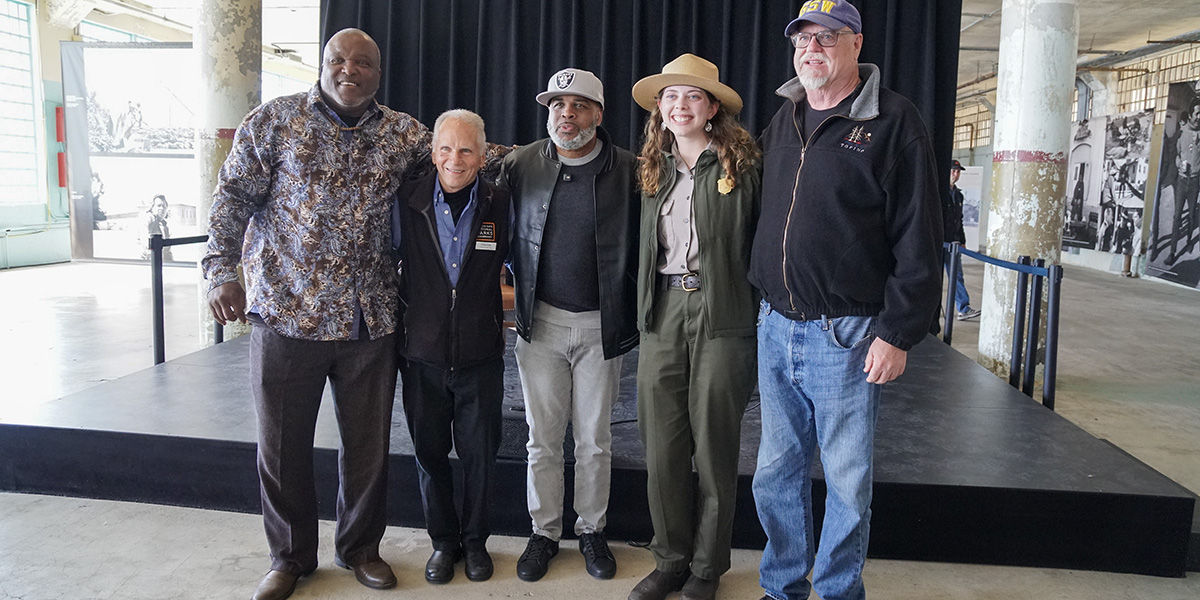
Anna Christie / NPS
All three lean into their experience being incarcerated. All three want to use that experience to tell new stories and help others. All three find Alcatraz the perfect platform to make that happen.
Stanford finds it symbolic that he now holds the keys to the world's most famous prison. Where once he was locked in, now he opens doors.
And the door he opens most is to the outside world, to enjoy the oranges and pinks of a shimmering sunset over the Golden Gate Bridge.
UPDATE, Nov. 2025: With great sadness, the Parks Conservancy announces Stanford Chatfield passed away Nov. 18, 2025. Stanford was a beloved member of the parks family and an inspiration to all who came into contact with him, whether on an Alcatraz tour, at a Formerly Incarcerated Speaker Series event, or out in the community. He contributed to the parks in powerful ways in his time with us, and our thoughts are with Stanford’s family, friends, and everybody who had the joy of knowing him.

